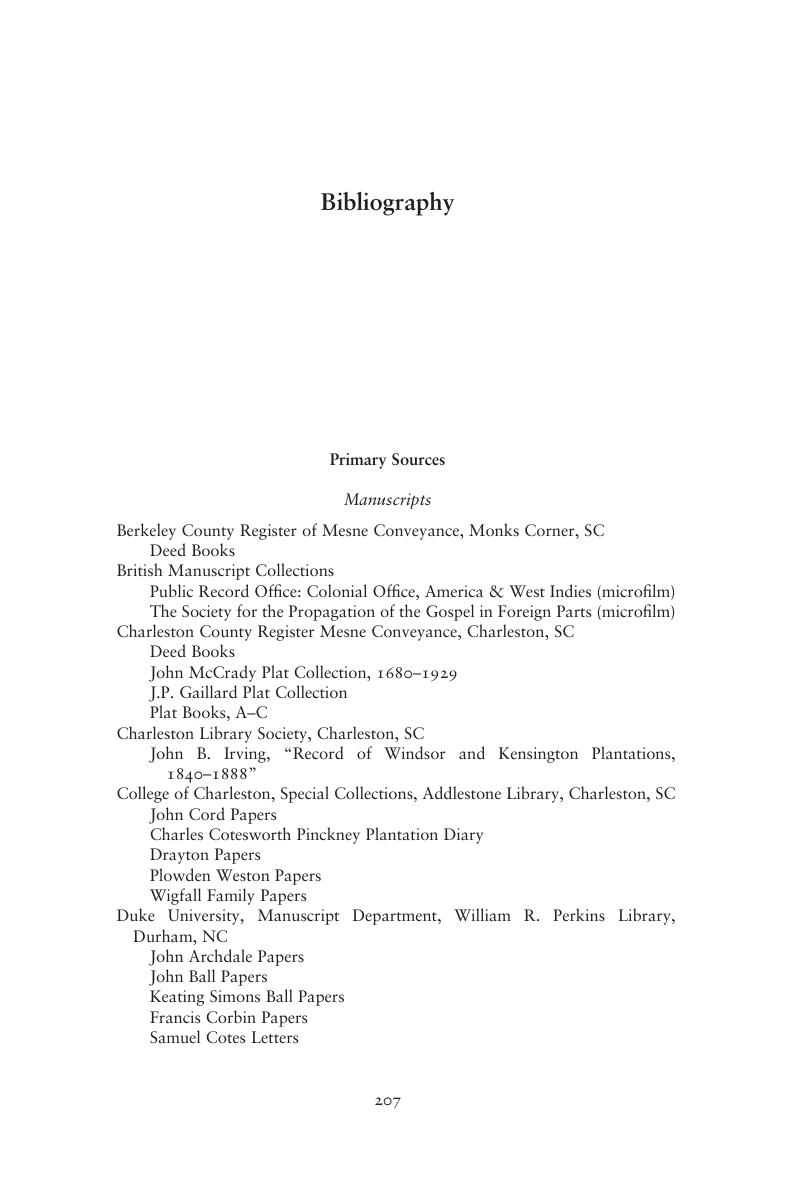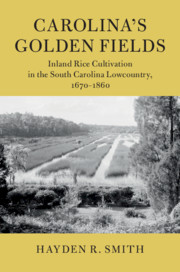Book contents
- Carolina’s Golden Fields
- Cambridge Studies on the American South
- Carolina’s Golden Fields
- Copyright page
- Dedication
- Contents
- Figures
- Table
- Acknowledgments
- 1 Introduction
- 2 Simple Reserves
- 3 The “Golden Mines of Carolina”
- 4 “To Depend Altogether on Reservoirs”
- 5 “The Rice Fields which Are Sown Have Been Partially Flowed”
- 6 Inland Rice Cultivation and the Promise of Agricultural Reform
- 7 Epilogue
- Appendix
- Bibliography
- Index
- References
Bibliography
Published online by Cambridge University Press: 28 October 2019
- Carolina’s Golden Fields
- Cambridge Studies on the American South
- Carolina’s Golden Fields
- Copyright page
- Dedication
- Contents
- Figures
- Table
- Acknowledgments
- 1 Introduction
- 2 Simple Reserves
- 3 The “Golden Mines of Carolina”
- 4 “To Depend Altogether on Reservoirs”
- 5 “The Rice Fields which Are Sown Have Been Partially Flowed”
- 6 Inland Rice Cultivation and the Promise of Agricultural Reform
- 7 Epilogue
- Appendix
- Bibliography
- Index
- References
Summary

- Type
- Chapter
- Information
- Carolina's Golden FieldsInland Rice Cultivation in the South Carolina Lowcountry, 1670–1860, pp. 207 - 236Publisher: Cambridge University PressPrint publication year: 2019



